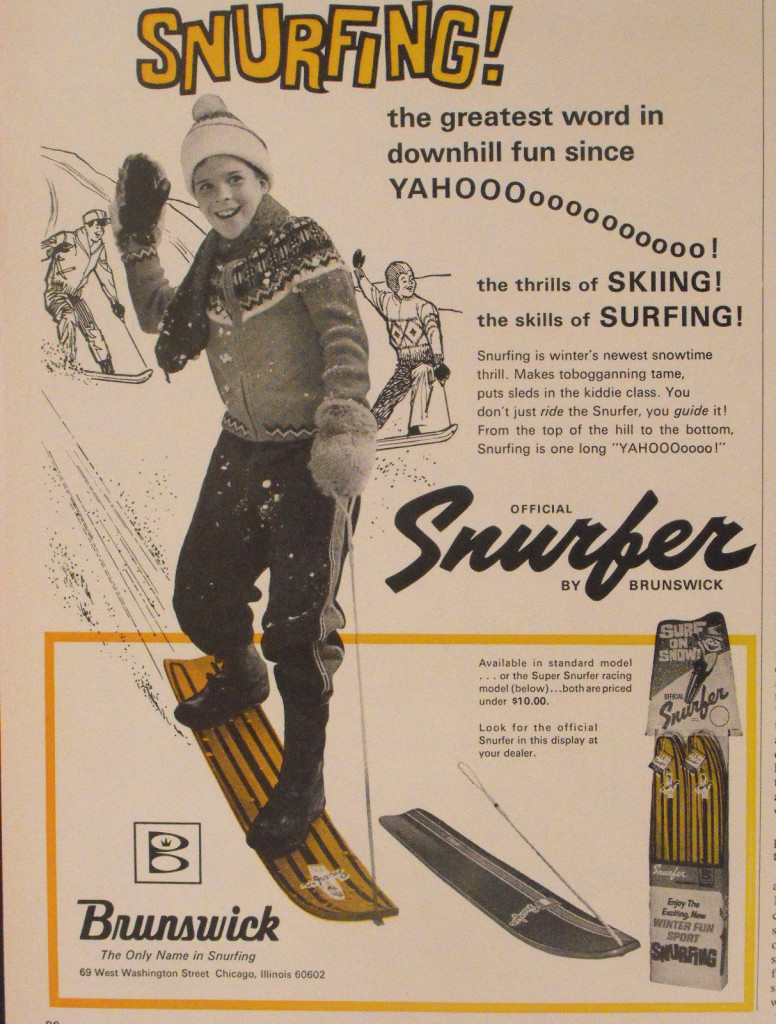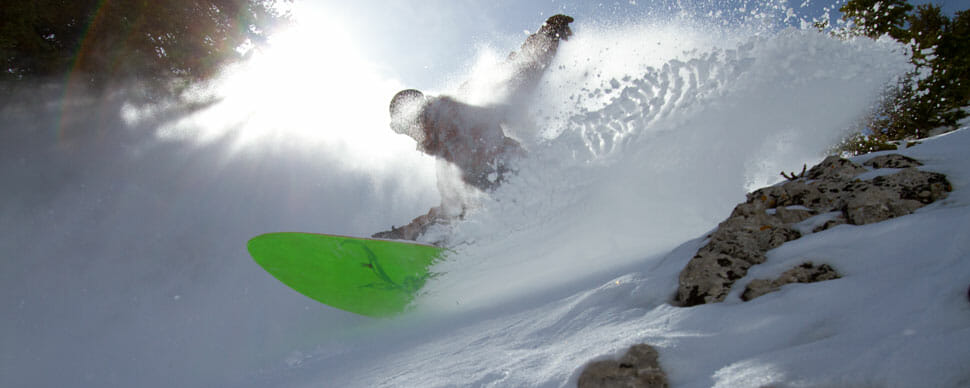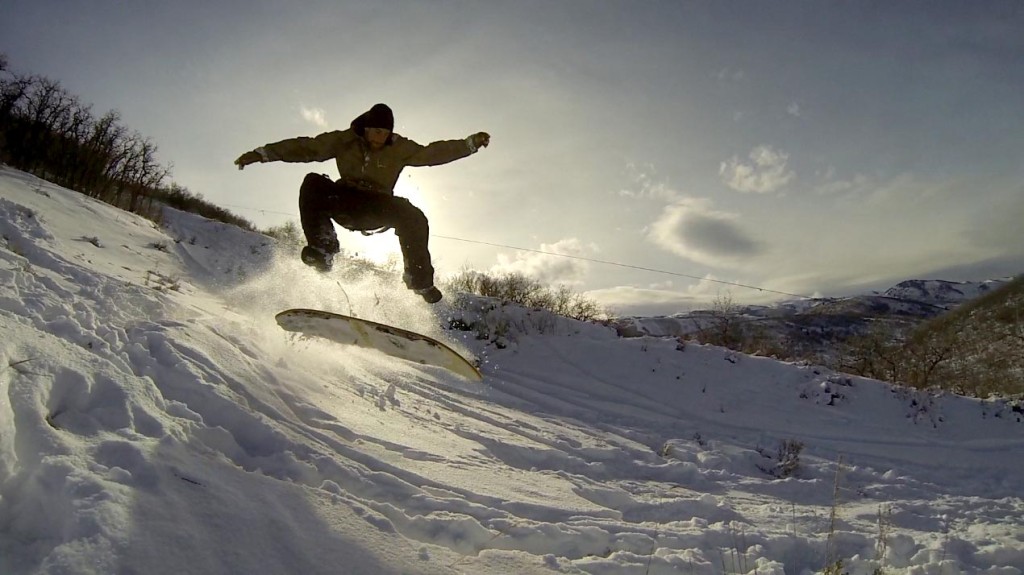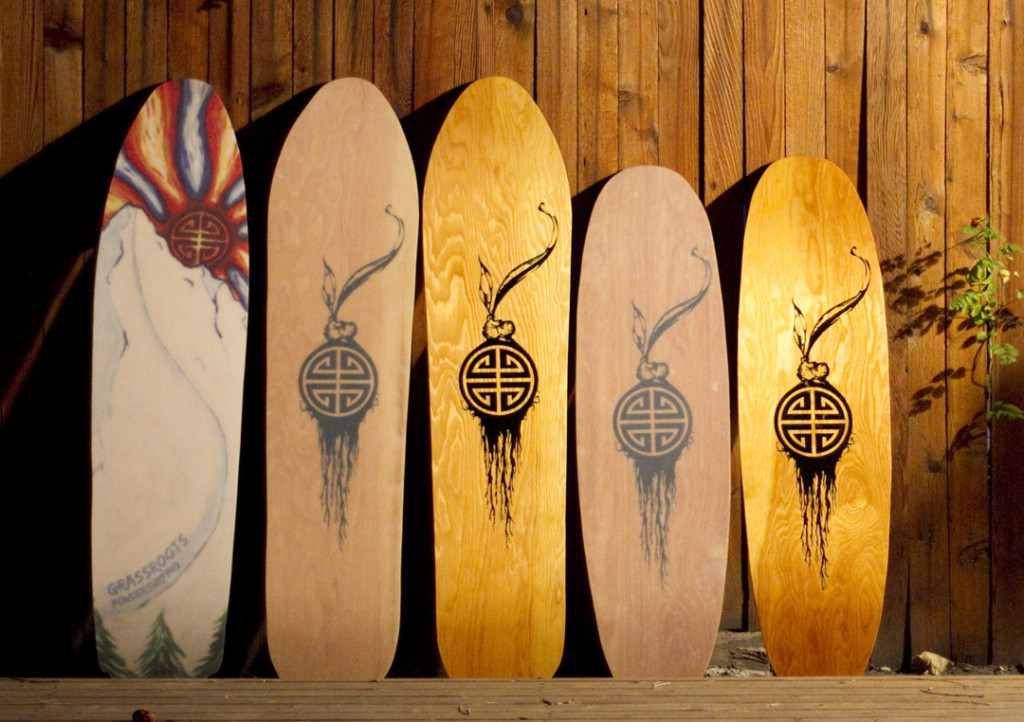Noboarding: the Art of Surfing Powder
The snowboarding movement is facing a slow recession since 2003. Fortunately, not all is lost for the art of sliding sideways, still reaching new grounds notably through the recent popularization of “powsurfs”, or so called noboards. Noboarding consists of sliding down on a binding-free plank, very much like surfing, but on snow.
While Sherman Popper is believed to have initiated bindingless riding under the name of “snurfer” in 1966, recent findings date the grassrooting of the sport at 150 years ago in Turkey, as well as antique snowboard precursors in North America dating from 1929. Noboarding remained a fairly unknown sport until Greg Todds, in British Columbia and Jeremy Jensen in Utah came into play. They both helped developing the movement further, notably through designing boards with progressive shapes that would respond more like modern surfboards overall.

Why would anyone want to surf powder?
Watching experienced Powsurfers looks beautiful, effortless and fluid. For beginners, it is a different story… while harder than snowboarding and skiing, powsurfing also comes with greater rewards. Snowboard Legend Terje Haakonsen explains: “all features feel bigger, the riding compares to surfing but possible tricks resemble skateboarding. Every ride is more committing, it makes the hills fun again”. A Iot of rideable familiar terrain that would normally feel unchallenging to an accomplished skier or snowboarder can become a new playground once again.

If you are not blessed by the local presence of big mountains, it can make moderate terrain and little hills quite fun. Just like catching your first waves on a surfboard, you might struggle to remain balanced on the board for the first few attempts, before being able to scream victory on your first successful slash turns. With a bit more practice, it can also make deep days a true blessing for powsurfing, as it caters better to moderate angled slopes and short, unexposed lines.

If you have skateboarding or surfing in your blood, or simply if you are in search of a new winter challenge, powsurfing may be calling your name. Unfortunately, Powsurfing is still a niche, with a handful of board crafters on the market only in North America and Europe. Costing roughly 350$ for a fully handcrafted board, the price may reduce your enthusiasm, although a deck still remains fairly affordable compared to the cost of a new ski or snowboard set.

If you are fortunate enough to live in the interior of BC or in Utah, getting in touch with a board crafter would be a great starting point in order to try one without a big financial commitment. Otherwise, the cheapest way to try it would be to get your hands on an old snowboard, remove the bindings, put some sticky pads and cut it into any shorter creative shape you want. Oh and… if you want to get more than a day of riding on your deck, don’t forget to tie in a leash!


